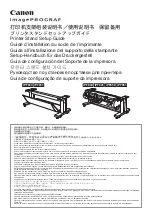
WIDTH statements
Many computer systems automatically insert a carriage return and
a line feed after every 80 characters. This insertion usually causes no
problem with text, but it can spoil your graphics. In the Graphics
mode, some systems insert the control codes after 120 columns, which
may be in the middle of a line.
You can usually prevent these unwanted control codes with a
WIDTH statement such as the one below:
WIDTH LPRINT 255
The format for your system may differ. Consult your computer’s doc-
umentation to find the correct format for your system. Then put a
WIDTH statement in one of the first lines of all your graphics pro-
grams. It is easier to put a WIDTH statement in all but the simplest of
your programs than to examine each one to see whether it needs such
a statement.
Semicolons and command placement
After the graphics command is issued, every number sent to the
printer is interpreted by the P-80 as a dot pattern and is printed on the
paper. Therefore, you must be careful where you put the graphics
command in your program, and you must not put another command
between the graphics command and the graphics data.
For example, suppose you want to print a 50-column graphics line
and you want to set the line spacing to o-dot for future additions to the
program. You might enter the following program:
20 LPRINT CHR$(27)"K"CHR$(50)CHR$(0)
30
LPRINT CHR$(27)"0"
40
FOR G=1 TO 50: LPRINT CHR$(74): NEXT G
This program has all the necessary elements. Line 20 has the com-
mand for Single-Density Graphics and specifies 50 columns. (Remem-
ber that you must use two CHR$ numbers to reserve columns even if
you only need the first one.) Line 30 has the correct command for
9-dot line spacing, and line 40 calls for the printing of a pin pattern 50
times.
Although this program has all the necessary elements, it will not
give you the printout of a single pattern that you want, as you can see
in the partial printout in Figure 6-4.
48
















































